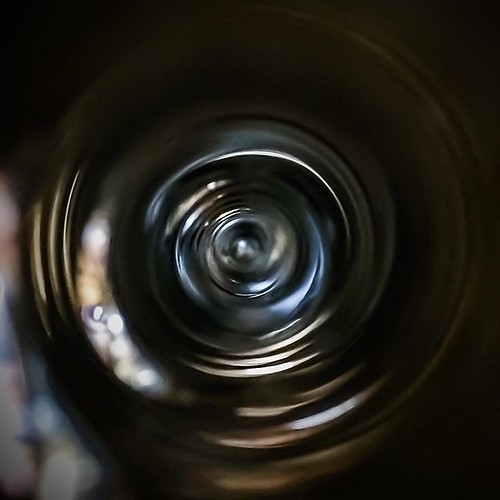Ucleotide changes had been detected. All nucleotide changes had been detected in subfragment msp (nucleotides), and 5 of those have been synonymous. Subfragment msp was conserved (Table ; More file ). Nine haplotypes were resolved as well as the haplotype diversity (Hd) was greater than that located for dbpII. Fourteen polymorphic web pages and seven haplotypes have been detected among the isolates for the amaIII gene fragment of bp (Table). Domain I had  nucleotide adjustments (within codons) and domain II three (inside codons). When compared with the Sal sequence, 3 additional MedChemExpress NSC53909 polymorphisms were detected, with 1 synonymous alter at codon Pro (cca ccc), and two nonsynonymous modifications at codons GluAla (gaa gca) and GluLys (gag aag). These variant codons resembled the sequence of the Belem strain (More file). A gene fragment of , pb was obtained for dbpII. Fourteen polymorphic sites and mutations have been detected inside codons . The only synonymous transform, at codon (aac aat), was found in two isolates. The majority of the diversity indexes had been lower than these estimated for amaIII and msp (Table ; More file).Temporal distribution of single and combined haplotypesP. vivax haplotypes have been detected at a diverse PRIMA-1 web frequency over time (Fig. ; Extra file). The highest quantity of haplotypes for all three gene fragments (dbpII, amaIII and msp) was discovered in , when all eight dbpII and seven on the amaIII haplotypes have been detected. Meanwhile, only three dbpII and four amaIII haplotypes were identified in . For msp, eight of nine total haplotypes have been detected in . Furthermore, of combined haplotypes (dbpIIamaIIImsp), have been detected in and seven PubMed ID:https://www.ncbi.nlm.nih.gov/pubmed/26115756 in (4 of them had been located in both years). For the three haplotypes exclusively detected in , haplotype A was significantly far more frequent than the others and was detected from January to September.Haplotype relationships for distinct merozoite genes and also the haplotype configuration for P. vivax isolates in SMXResultsGenetic polymorphism of P. vivax merozoite genes in SMXFrom P. vivax isolates (, n ; , n ), gene fragments dbpII, amaIII and msp had been amplified as well as the consensus nucleotide sequence obtained. While numerous P. vivax isolates had codons or nucleotide fragments
nucleotide adjustments (within codons) and domain II three (inside codons). When compared with the Sal sequence, 3 additional MedChemExpress NSC53909 polymorphisms were detected, with 1 synonymous alter at codon Pro (cca ccc), and two nonsynonymous modifications at codons GluAla (gaa gca) and GluLys (gag aag). These variant codons resembled the sequence of the Belem strain (More file). A gene fragment of , pb was obtained for dbpII. Fourteen polymorphic sites and mutations have been detected inside codons . The only synonymous transform, at codon (aac aat), was found in two isolates. The majority of the diversity indexes had been lower than these estimated for amaIII and msp (Table ; More file).Temporal distribution of single and combined haplotypesP. vivax haplotypes have been detected at a diverse PRIMA-1 web frequency over time (Fig. ; Extra file). The highest quantity of haplotypes for all three gene fragments (dbpII, amaIII and msp) was discovered in , when all eight dbpII and seven on the amaIII haplotypes have been detected. Meanwhile, only three dbpII and four amaIII haplotypes were identified in . For msp, eight of nine total haplotypes have been detected in . Furthermore, of combined haplotypes (dbpIIamaIIImsp), have been detected in and seven PubMed ID:https://www.ncbi.nlm.nih.gov/pubmed/26115756 in (4 of them had been located in both years). For the three haplotypes exclusively detected in , haplotype A was significantly far more frequent than the others and was detected from January to September.Haplotype relationships for distinct merozoite genes and also the haplotype configuration for P. vivax isolates in SMXResultsGenetic polymorphism of P. vivax merozoite genes in SMXFrom P. vivax isolates (, n ; , n ), gene fragments dbpII, amaIII and msp had been amplified as well as the consensus nucleotide sequence obtained. While numerous P. vivax isolates had codons or nucleotide fragments
that resembled either Sal or Belem, none was identical to either of those sequences. The msp sequence was additional polymorphic than that of dbpII or amaIII (Table).Each and every gene fragment developed a haplotype network with a distinct pattern (Fig.).) The SMX dbpII network was the simplest; the haplotypes have been separated by a single to 3 mutational actions. From a highly frequent haplotype (dh; .), two branches emerged, along with the most distant haplotypes (dh or dh) have been separated in opposite directions by eight and eleven mutational actions, respectively. In lieu of a network, a straightline pattern was observed.) For SMX amaIII, the hugely frequent haplotype (ah; .) and another 4 formed a loop, with Gonz ezCer et al. Parasites Vectors :Page ofTable Comparison of P. vivax merozoite gene diversity amongst isolates from southern Mexico, Parameter bpGene fragment msp amaIII dbpII . .n, polymorphic internet sites (SD) w (SD; nr, fr) Hd (SD)n, nucleotide changesn, haplotypesTajima’s D test (P worth)bp, base pairs; Quantity; Nucleotide diversity (all nucleotide websites); nr, no recombination, and fr, totally free recombination; Haplotype diversity; SD, normal deviationmutational steps in in between. From haplotype ah there was a branch connecting much more divergent  haplotypes, ah and ah.) The SMX msp.Ucleotide adjustments have been detected. All nucleotide adjustments have been detected in subfragment msp (nucleotides), and five of these had been synonymous. Subfragment msp was conserved (Table ; Added file ). Nine haplotypes have been resolved and also the haplotype diversity (Hd) was higher than that identified for dbpII. Fourteen polymorphic web-sites and seven haplotypes had been detected among the isolates for the amaIII gene fragment of bp (Table). Domain I had nucleotide alterations (within codons) and domain II 3 (within codons). In comparison to the Sal sequence, three extra polymorphisms had been detected, with one synonymous alter at codon Pro (cca ccc), and two nonsynonymous modifications at codons GluAla (gaa gca) and GluLys (gag aag). These variant codons resembled the sequence with the Belem strain (Extra file). A gene fragment of , pb was obtained for dbpII. Fourteen polymorphic websites and mutations had been detected within codons . The only synonymous alter, at codon (aac aat), was found in two isolates. A lot of the diversity indexes were decrease than these estimated for amaIII and msp (Table ; Further file).Temporal distribution of single and combined haplotypesP. vivax haplotypes were detected at a diverse frequency over time (Fig. ; Extra file). The highest quantity of haplotypes for all 3 gene fragments (dbpII, amaIII and msp) was discovered in , when all eight dbpII and seven in the amaIII haplotypes were detected. Meanwhile, only three dbpII and 4 amaIII haplotypes have been identified in . For msp, eight of nine total haplotypes were detected in . Moreover, of combined haplotypes (dbpIIamaIIImsp), were detected in and seven PubMed ID:https://www.ncbi.nlm.nih.gov/pubmed/26115756 in (4 of them were discovered in each years). For the three haplotypes exclusively detected in , haplotype A was considerably much more frequent than the other individuals and was detected from January to September.Haplotype relationships for diverse merozoite genes plus the haplotype configuration for P. vivax isolates in SMXResultsGenetic polymorphism of P. vivax merozoite genes in SMXFrom P. vivax isolates (, n ; , n ), gene fragments dbpII, amaIII and msp have been amplified plus the consensus nucleotide sequence obtained. While quite a few P. vivax isolates had codons or nucleotide fragments
haplotypes, ah and ah.) The SMX msp.Ucleotide adjustments have been detected. All nucleotide adjustments have been detected in subfragment msp (nucleotides), and five of these had been synonymous. Subfragment msp was conserved (Table ; Added file ). Nine haplotypes have been resolved and also the haplotype diversity (Hd) was higher than that identified for dbpII. Fourteen polymorphic web-sites and seven haplotypes had been detected among the isolates for the amaIII gene fragment of bp (Table). Domain I had nucleotide alterations (within codons) and domain II 3 (within codons). In comparison to the Sal sequence, three extra polymorphisms had been detected, with one synonymous alter at codon Pro (cca ccc), and two nonsynonymous modifications at codons GluAla (gaa gca) and GluLys (gag aag). These variant codons resembled the sequence with the Belem strain (Extra file). A gene fragment of , pb was obtained for dbpII. Fourteen polymorphic websites and mutations had been detected within codons . The only synonymous alter, at codon (aac aat), was found in two isolates. A lot of the diversity indexes were decrease than these estimated for amaIII and msp (Table ; Further file).Temporal distribution of single and combined haplotypesP. vivax haplotypes were detected at a diverse frequency over time (Fig. ; Extra file). The highest quantity of haplotypes for all 3 gene fragments (dbpII, amaIII and msp) was discovered in , when all eight dbpII and seven in the amaIII haplotypes were detected. Meanwhile, only three dbpII and 4 amaIII haplotypes have been identified in . For msp, eight of nine total haplotypes were detected in . Moreover, of combined haplotypes (dbpIIamaIIImsp), were detected in and seven PubMed ID:https://www.ncbi.nlm.nih.gov/pubmed/26115756 in (4 of them were discovered in each years). For the three haplotypes exclusively detected in , haplotype A was considerably much more frequent than the other individuals and was detected from January to September.Haplotype relationships for diverse merozoite genes plus the haplotype configuration for P. vivax isolates in SMXResultsGenetic polymorphism of P. vivax merozoite genes in SMXFrom P. vivax isolates (, n ; , n ), gene fragments dbpII, amaIII and msp have been amplified plus the consensus nucleotide sequence obtained. While quite a few P. vivax isolates had codons or nucleotide fragments
that resembled either Sal or Belem, none was identical to either of these sequences. The msp sequence was a lot more polymorphic than that of dbpII or amaIII (Table).Every gene fragment developed a haplotype network using a different pattern (Fig.).) The SMX dbpII network was the simplest; the haplotypes had been separated by one to 3 mutational steps. From a very frequent haplotype (dh; .), two branches emerged, plus the most distant haplotypes (dh or dh) were separated in opposite directions by eight and eleven mutational actions, respectively. Rather than a network, a straightline pattern was observed.) For SMX amaIII, the very frequent haplotype (ah; .) and one more 4 formed a loop, with Gonz ezCer et al. Parasites Vectors :Web page ofTable Comparison of P. vivax merozoite gene diversity amongst isolates from southern Mexico, Parameter bpGene fragment msp amaIII dbpII . .n, polymorphic web sites (SD) w (SD; nr, fr) Hd (SD)n, nucleotide changesn, haplotypesTajima’s D test (P value)bp, base pairs; Number; Nucleotide diversity (all nucleotide sites); nr, no recombination, and fr, cost-free recombination; Haplotype diversity; SD, regular deviationmutational measures in amongst. From haplotype ah there was a branch connecting additional divergent haplotypes, ah and ah.) The SMX msp.
